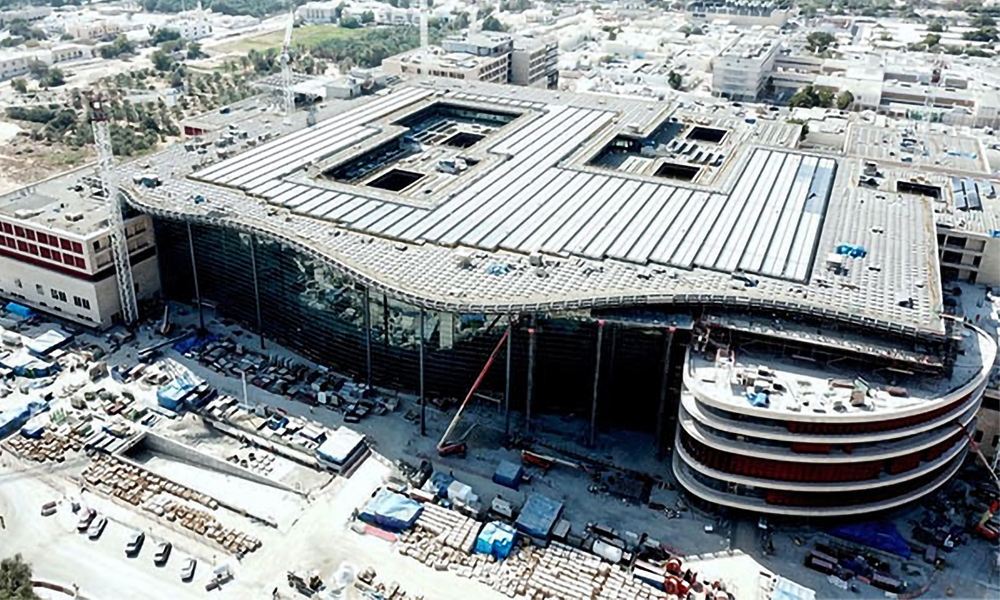Construction on the $1.2bn New Al Ain Hospital is 66% complete, according to a statement Abu Dhabi General Services Company (Musanada) made to news agency WAM. The 347,000sqm project is being developed in collaboration with the Abu Dhabi Health Services Company (Seha).
Discussing the project, Ali Al Haj Al Mehairbi, Musanadas executive director, Building Construction Management Division, said that the project was designed in line with environmental sustainability criteria, which aims to reduce energy and water consumption and make maximum use of sunlight.
There were 3,462 workers engaged in the project which started in March 2014 along three main contracts. The company completed all the concrete works of the main and utility buildings together with the projects steel structures, and it commissioned and handed over the primary substation. Musanada completed 83% of the utility building works, 71% of the main building works, 76% of the electromechanical works and 54% of the architectural works, explained Al Mehairbi.
The hospital is said to boast a distinctive design that allows shade to fall on the windows on the external facades. Additionally, the use of internal blinds which are connected to a smart control system that reacts to external weather and internal conditions will help reduce load on the air conditioning systems. Low-emission and power consumption lighting systems will also be installed to conserve power.
Speaking about the hospital project, Mohamed Hassan Al-Zaabi, executive director, Operations Department at Seha said that his organisation is keen on providing high quality healthcare services, which are accessible by community members.
As per the report, the hospital will rely on solar power to generate clean electricity. 4,700 panels with a total capacity of 1.5-megawatts will help cover partial energy requirements, while reducing hospital operating costs. The solar panels will also enhance the efficiency of thermal insulation on the ceiling of the building, which the hospital notes will reduce load on its air conditioning systems.
The hospital will also rely on innovative technology to minimise the wastage of water. Special valves will be installed to conserve water throughout the hospital, while wastewater from air conditioning equipment and stormwater will be used to irrigate the hospitals external landscape.



